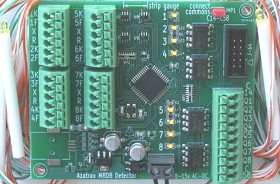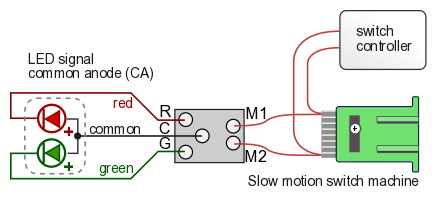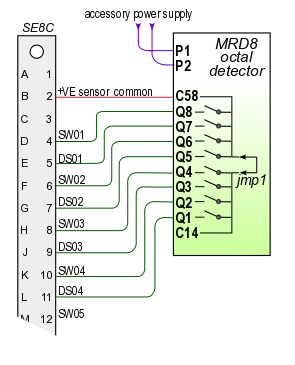jfrey40535
New Member
Hello everyone, this is my first post to the forum.
I am looking for some guidance on how to approach the installation of signals at an interlocking that is comprised of 4 switches.
I am only looking to install controls for the signals and not run it through my DCC system (Digitrax).
The interlocking is 2 tracks, bi-directional operation. The signals being installed are LED. The signals themselves are a custom built G-type, 2 target on a mast, which will cover the 2 tracks. So 4 targets total, 2 for each track.
If I understand correctly, I will need sensors on each of the 4 switches to detect switch position, then sensors on both sides of the interlocking to detect occupancy. I plan on using IR sensors if I go with Azatrax MRD1-NV for detectors. Then I would need a series of sensors on both sides of the interlocking to detect occupancy status for 2 blocks on either side of the interlocking. From there the detectors would connect to a controller which would interface with a computer to run the logic.
I would like the signals to have the ability to display a number of aspects depending on block and switch status, outside of the basic stop, clear and approach.
A friend recommended I consider C/MRI, which seems extremely complicated though probably the best out there in terms of flexible programming. There are several other options and I'm looking for some feedback from those who've been down this path on what works best. I have a little experience with JMRI for programming decoders, but that's it.
If anyone can make a recommendation, please let me know what you've used for detectors, controllers and software. Any guidance would be appreciated!
I am looking for some guidance on how to approach the installation of signals at an interlocking that is comprised of 4 switches.
I am only looking to install controls for the signals and not run it through my DCC system (Digitrax).
The interlocking is 2 tracks, bi-directional operation. The signals being installed are LED. The signals themselves are a custom built G-type, 2 target on a mast, which will cover the 2 tracks. So 4 targets total, 2 for each track.
If I understand correctly, I will need sensors on each of the 4 switches to detect switch position, then sensors on both sides of the interlocking to detect occupancy. I plan on using IR sensors if I go with Azatrax MRD1-NV for detectors. Then I would need a series of sensors on both sides of the interlocking to detect occupancy status for 2 blocks on either side of the interlocking. From there the detectors would connect to a controller which would interface with a computer to run the logic.
I would like the signals to have the ability to display a number of aspects depending on block and switch status, outside of the basic stop, clear and approach.
A friend recommended I consider C/MRI, which seems extremely complicated though probably the best out there in terms of flexible programming. There are several other options and I'm looking for some feedback from those who've been down this path on what works best. I have a little experience with JMRI for programming decoders, but that's it.
If anyone can make a recommendation, please let me know what you've used for detectors, controllers and software. Any guidance would be appreciated!




